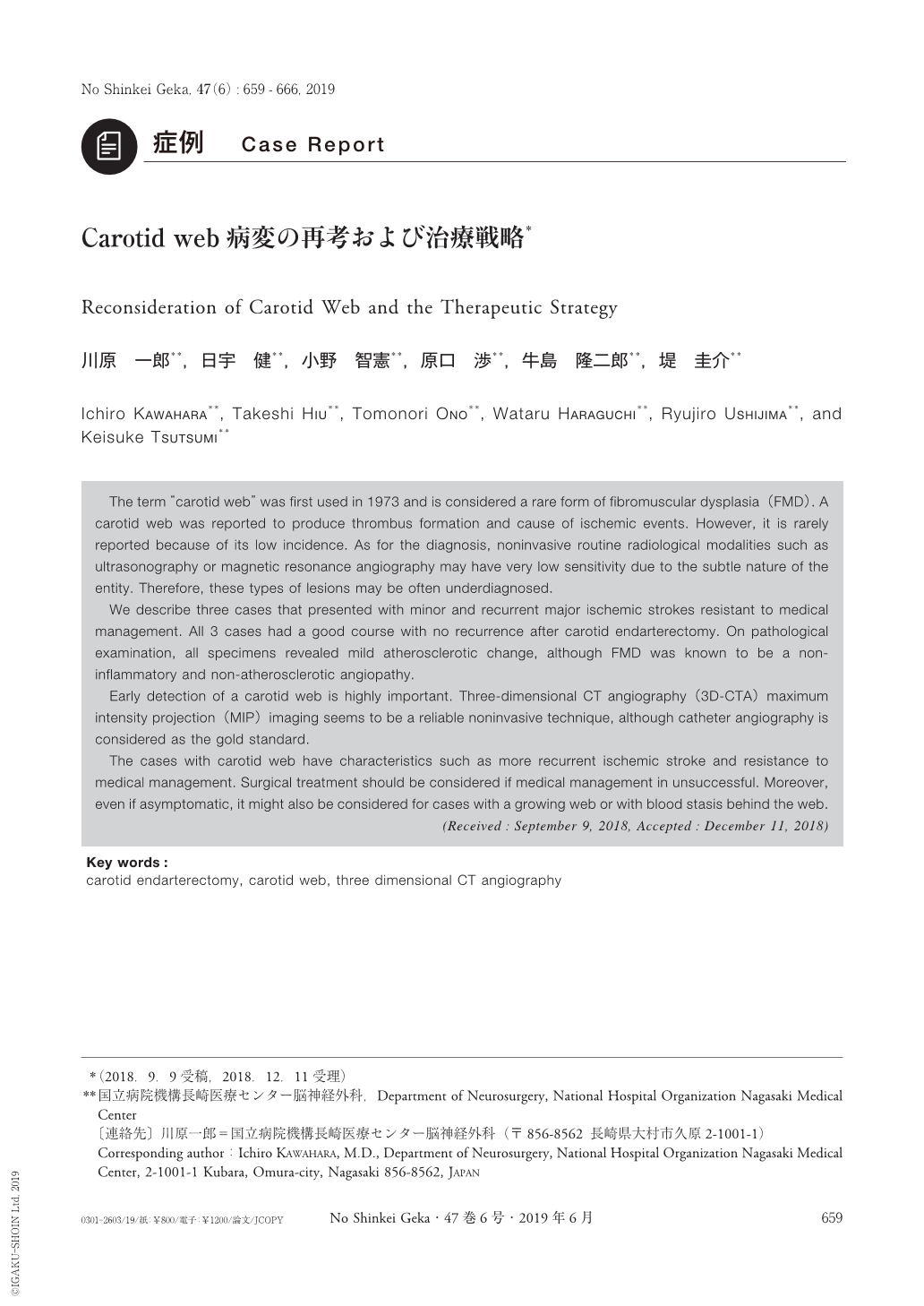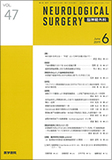Japanese
English
- 有料閲覧
- Abstract 文献概要
- 1ページ目 Look Inside
- 参考文献 Reference
Ⅰ.はじめに
“Carotid web”という名称は1973年にMomoseら14)によって初めて使用され,その後も脳梗塞の塞栓源になり得る病変としていくつか報告されてきたが1-21),まとまった症例数も少なく,その認知度は比較的低いと言える.病変自体が小さいため,超音波検査やMR angiography(MRA)などのsensitivityが低くなってしまい,診断においては正常ないしは軽度狭窄病変として扱われ,その危険性が見逃されている可能性がある.
今回われわれは,minor strokeおよび治療抵抗性にmajor stroke再発を来したcarotid web病変の3症例を経験し,血行再建術を行うことで良好な結果を得たので,文献的考察を加え報告する.
The term “carotid web” was first used in 1973 and is considered a rare form of fibromuscular dysplasia(FMD). A carotid web was reported to produce thrombus formation and cause of ischemic events. However, it is rarely reported because of its low incidence. As for the diagnosis, noninvasive routine radiological modalities such as ultrasonography or magnetic resonance angiography may have very low sensitivity due to the subtle nature of the entity. Therefore, these types of lesions may be often underdiagnosed.
We describe three cases that presented with minor and recurrent major ischemic strokes resistant to medical management. All 3 cases had a good course with no recurrence after carotid endarterectomy. On pathological examination, all specimens revealed mild atherosclerotic change, although FMD was known to be a non-inflammatory and non-atherosclerotic angiopathy.
Early detection of a carotid web is highly important. Three-dimensional CT angiography(3D-CTA)maximum intensity projection(MIP)imaging seems to be a reliable noninvasive technique, although catheter angiography is considered as the gold standard.
The cases with carotid web have characteristics such as more recurrent ischemic stroke and resistance to medical management. Surgical treatment should be considered if medical management in unsuccessful. Moreover, even if asymptomatic, it might also be considered for cases with a growing web or with blood stasis behind the web.

Copyright © 2019, Igaku-Shoin Ltd. All rights reserved.


